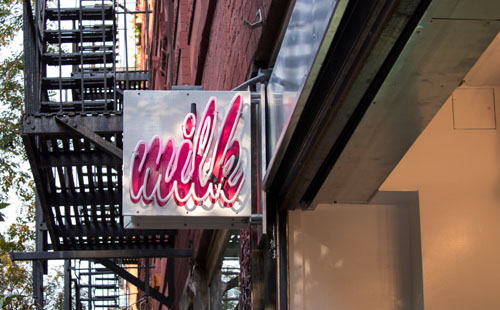by WorldTribune Staff, April 25, 2019
Warning to any American who enjoys eating out, or just writing about food: The politically correct “woke” mob “is watching your every bite and every word,” a columnist wrote.
Recently, the Milk Bar dessert chain “caved to a handful of complaints over their Crack Pie — a sweet, oat-crusted confection that’s been their most popular item for 11 years,” Steve Cuozzo wrote for the New York Post.

Why? The “woke” police insist that “ ‘Crack’ is a word forbidden to use outside of its literal meaning lest it offend ‘largely poor, largely black communities’ that suffered from the crack-cocaine epidemic and violence of the 1980s,” Cuozzo wrote.
Milk Bar has 16 outlets in six American and Canadian cities. None of the outlets, Cuozzo pointed out, “is known to have been picketed, boycotted or otherwise condemned by members of poor and/or black communities.”
Cuozzo continued: “The purported fury emanated from a very, very few food critics who evidently believe that the ¬oppressed class needs protection from supposedly racist restaurateurs — notably The Boston Globe’s Devra First, who wrote a piece headlined ‘There’s nothing cute about Crack Pie.’ ”
Following the criticism, Milk Bar chef/owner Christina Tosi announced that the Crack Pie would now be known as the Milk Bar Pie. She explained, “The old name was getting in the way of letting the gooey, buttery slice bring happiness.”
Tosi’s capitulation, Cuozzo noted, followed that of Arielle Haspel, owner of a small Chinese eatery called Lucky Lee’s on University Place in New York City.
Haspel “issued a craven apology for ‘insensitivity.’ Her transgression, in the eyes of a mere few Twitter posters who were elevated into pitchfork-waving street mobs by ‘woke’ food sites, was to post online that her lo mein would be more ‘clean’ (a common food-world term for ‘healthier’) than traditional American-Chinese lo mein noodles that made some people feel ‘bloated and icky,’ ” Cuozzo wrote.
“Since most anyone who’s ever eaten starchy lo mein knows exactly what Haspel was talking about, what, exactly, was her crime?” Cuozzo continued. “Well, she’s a non-Asian who is ‘literally and blatantly ¬attacking someone’s culture,’ ¬according to a tweet from a Tampa, Florida-based food blogger who called me a ‘racist’ for defending Haspel. Alas, Haspel — reasonably fearful of damage to her new business — apologized. ‘We are so sorry,’ she said, and took down the ‘offensive’ language.”
Cuozzo wondered: “What harmless terms will fall to the posse next? How about club sandwich? It may, after all, conjure unpleasant emotions in blacks, Jews, women and others who were once barred from private clubs.”
The characterization of certain language as racist “is blatantly selective,” Cuozzo wrote. “While it’s a cultural ‘assault’ to factually state that much traditional Chinese-American cooking is fatty, it’s all in a day’s work for respected food organs and writers to falsely associate innocent Italian-American ‘red sauce’ restaurants, and their owners and employees and customers, with mobsters and violence.”
Cuozzo continued: “They routinely cite “Tony ¬Soprano food” and the voodoo magic of Italian-American cuisine’s ‘immigrant mysticism.’ A 2016 Eater.com guide to Little Italy said that at one place, it was fun to ‘sit down here hoping not to get whacked.’ New York Magazine cheerfully advised that dishes at Carbone ‘could feed an entire crew of Gambinos.’ ”
The push to make food coverage a “safe space” for certain other ethnicities “reaches ludicrous depths in the work of San Francisco Chronicle restaurant critic Soleil Ho,” Cuozzo wrote. “She says she’ll never use ‘addictive’ to describe a food’s deliciousness. Nor ‘kaffir lime’ for the southeast Asian citrus fruit because it sounds like a derogatory term used in the past by apartheid-era white South Africans for blacks.”
“Never mind,” Cuozzo noted, “that words may have different meanings on different continents. The lime’s name is most likely derived from a Sri Lankan ethnic group known as Kaffirs who use the term proudly.”
But Soleil Ho “won’t use the word ‘ethnic,’ either, because its ‘imprecision’ gives her a headache,” Cuozzo wrote. “She and her fellow travelers in culinary correctness give the rest of us indigestion.”
Your Intel Brief: Geostrategy-Direct __________ Fix The Media Now

You must be logged in to post a comment Login